
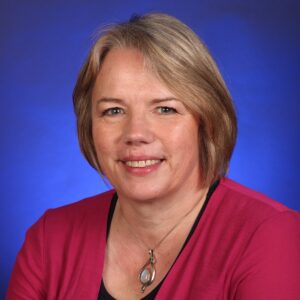


Children do not exist in isolation; their lives are embedded in families, communities and societies. Nested within these communities are the schools and early childhood education (ECE) services children attend.
When I was a child, my experience was of little interaction between schools and their communities. Looking back, this seems due to the culture of practice within schools, more than the school gates. In the intervening years, writers like Bronfenbrenner1 have drawn our attention to the complex influences of environments – both immediate and more remote – on development and the value of creating meaningful reciprocal connections between the different groups and settings that children are part of.
Today we see attention to the role of communities reflected in our curriculum documents. “Family and Community/Whānau Tangata” is one of the principles of the early childhood curriculum, Te Whāriki, along with the expectation that each ECE service will use the curriculum “as a basis for weaving with children, parents and whānau its own local curriculum of valued learning, taking into consideration also the aspirations and learning priorities of hapū, iwi and community”.
For kura and schools, Te Marautanga notes that for learners to succeed, the school, the home, hapū, iwi and community must work together effectively
and consistently, while a central principle of the New Zealand Curriculum is Community Engagement”, connecting with the students’ wider lives and gaining support of families, whānau and communities. The importance of community weaves through each document, with important implications for pedagogy.
Teachers often take the lead in initiating connections and building communities for learning.
Teachers often take the lead in initiating connections and building communities for learning. In a Centre of Innovation research project2, teachers at Mangere Bridge Kindergarten documented their steps in creating a community approach to starting school. They found that projects and activities were a foundation for collaboration, and that the most successful projects – those that brought more people on board – were “mutually interesting”. Over time, momentum increased, and strategic community partners were drawn in. At first, the ECE teachers initiated each activity, but eventually other members of the community began to propose and lead projects.
Working together on meaningful projects was also a feature of the Learning journeys from early childhood into school project. Teachers collaboratively planned, implemented and evaluated a range of action research “mini projects”, providing opportunities for shared reflections on practice and a collective approach to supporting children’s learning. Rather than attempting to find a “one-size-fits-all” formula, the process of trying “what works here” was key. Powerful benefits came from spiralling between action and evaluation, which often sparked a new direction or more nuanced approach.
The idea of “negotiated spaces” helps with the sometimes challenging work of bringing together different and sometimes conflicting world views. A recent report, Bridging Cultural Perspectives, expands on this idea and provides steps to implement “respectful and negotiated conversations”.
Working together effectively across different sectors and with family, whānau and other groups to enhance children’s learning may require courage and persistence, but as many teachers have found, a community approach can have valuable benefits for learners and learning.
Associate Professor Sally Peters is Head of School at Te Kura Toi Tangata School of Education, University of Waikato
1. e.g. Bronfenbrenner, U. & Morris, P. A. (1997). The ecology of developmental processes. In W. Damon & R. M. Lerner (Eds.) Handbook of child psychology: Vol. 1. Theoretical models of human development (5th ed., pp. 993-1029). New York: John Wiley.
2. Hartley, C., Rogers, P., Smith, J., Peters, S. & Carr, M. (2012). Crossing the border: a community negotiates the transition from early childhood to primary school. Wellington: NZCER.
Related Posts
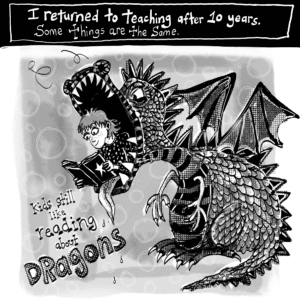
After a decade away from the whiteboard, educator and comic artist Indira Neville has returned to teaching – and she’s drawing about it. In this comic series, Indira shares a glimpse into her days at school, capturing what’s changed, what’s stayed the same and what she never saw coming.
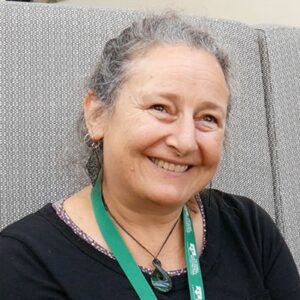
The key obligation for governments is to resource the early childhood care and education sector in order to provide high quality, culturally sustaining provision, since research has reinforced that this serves both individual and societal long-term wellbeing. So why are they not doing this?
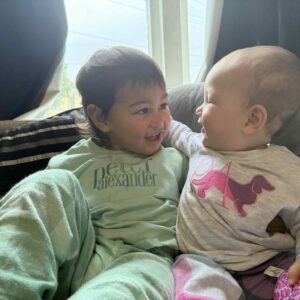
Jasmine Taankink (Ngā Mahanga-a-Tairi) is a second language speaker of te reo Māori committed to the intergenerational transmission of te reo in her whānau and community. She shares with us her hopes for her three moko.
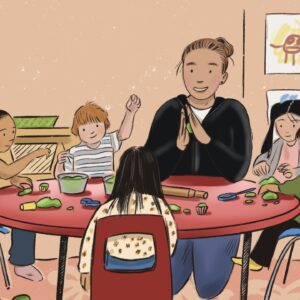
Qualified early childhood teachers bring deep knowledge, intentional teaching and powerful relationships that shape children’s futures. Ako hears from kaiako across Aotearoa about the life-changing difference their study has made, and why tamariki deserve nothing less than skilled, thoughtful educators from the very start.